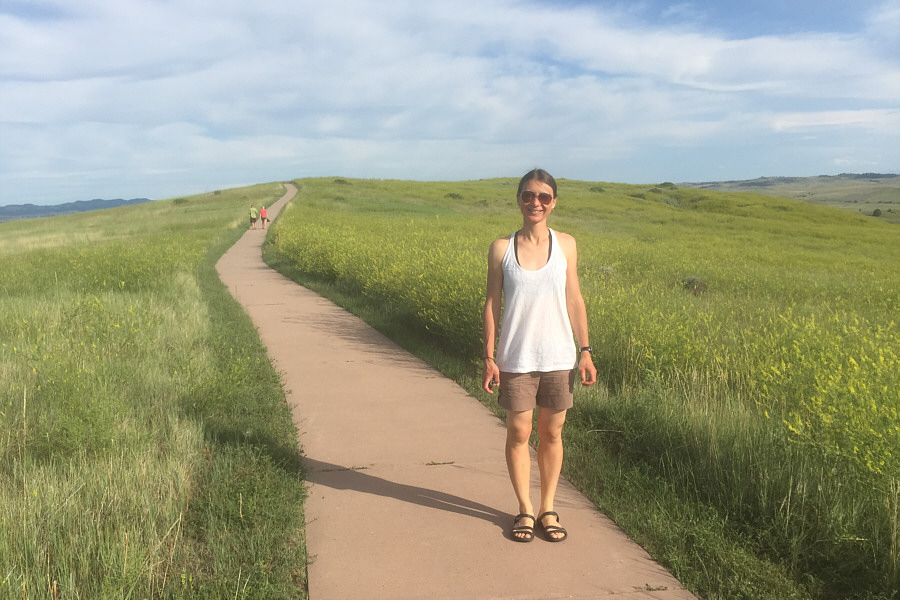
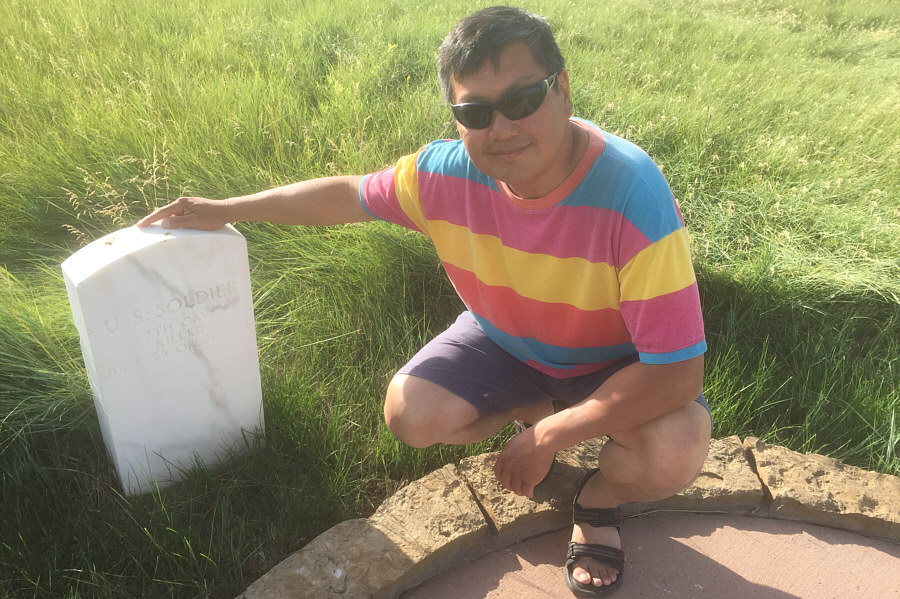
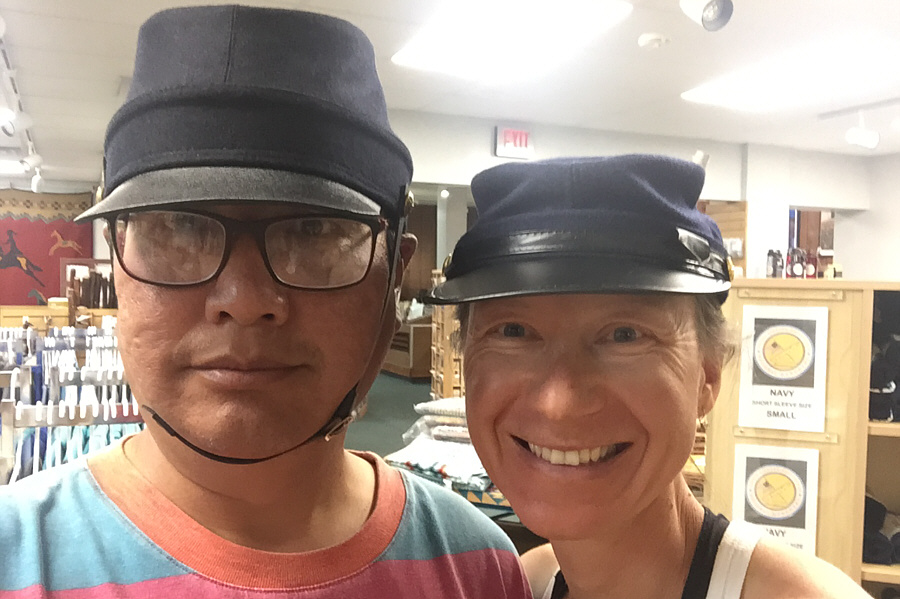
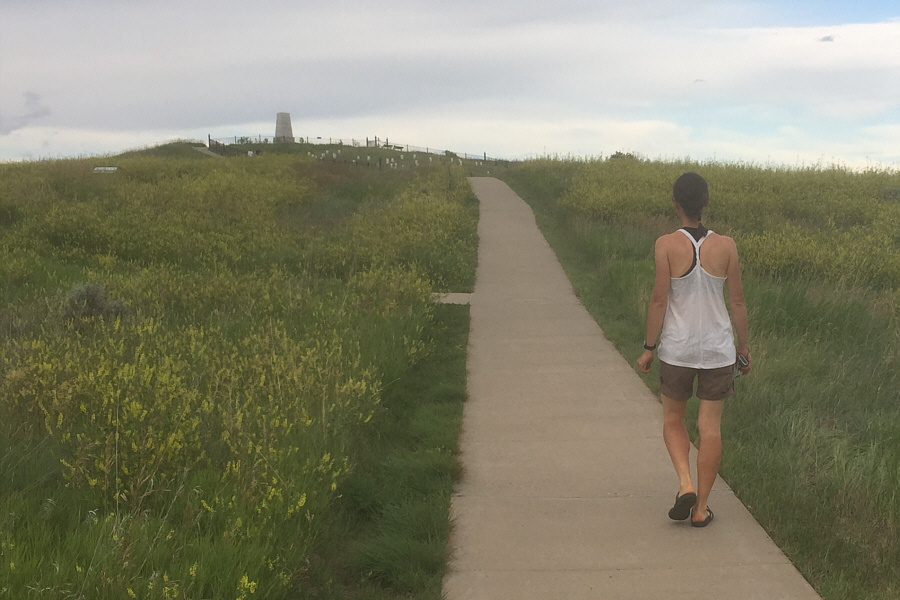
 |
Zosia walks along a paved path near Reno Hill where the remaining battalions of the US Army's 7th Calvary under the command of Major Marcus Reno and Captain Frederick Benteen made a defensive stand to survive the Battle of the Little Bighorn. |
 |
Throughout the monument site, white marble headstones such as this one mark the locations of where US Army soldiers' bodies were found after the battle. All of them were initially buried right where they were found, but in 1877, the remains of most of the officers were reinterred in various places throughout the United States. The remains of all other troops were reinterred in a mass grave atop nearby Last Stand Hill in 1881. |
 |
In the monument's gift shop, Sonny and Zosia consider enlisting in the US Army's 7th Calvary Regiment. |
 |
Zosia heads for Last Stand Hill where Lieutenant-Colonel George Custer and the remnants of his battalion were ultimately annihilated by the combined forces of the Lakota and Northern Cheyenne Native American tribes. |
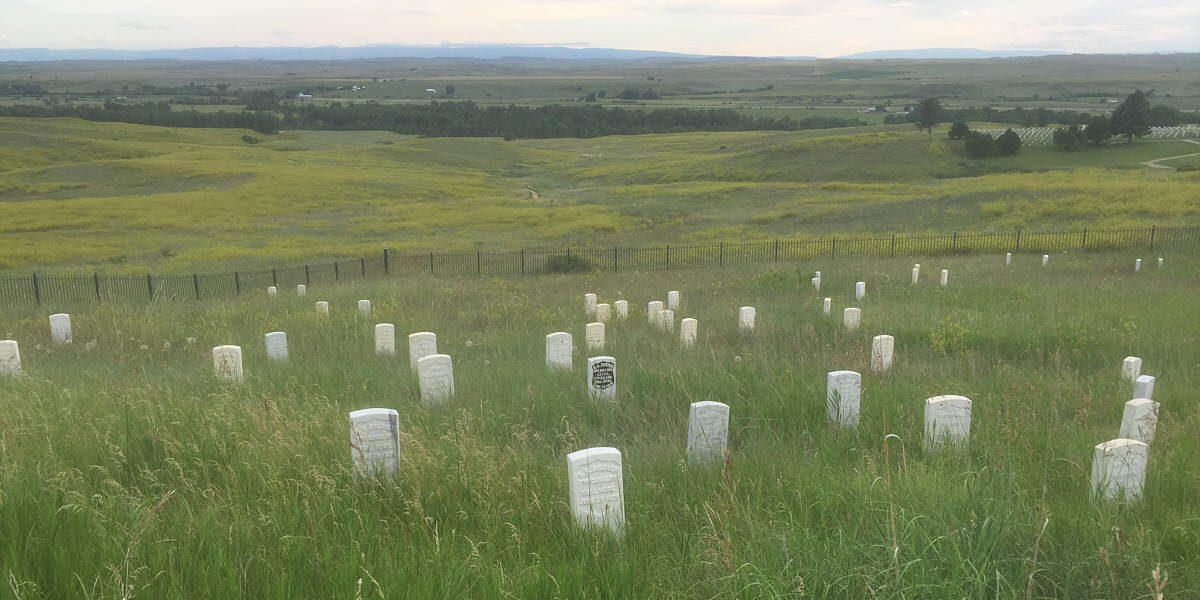
Here is the view to the south from the top of Last Stand Hill. The blackened headstone marks the spot where Custer was purportedly slain.
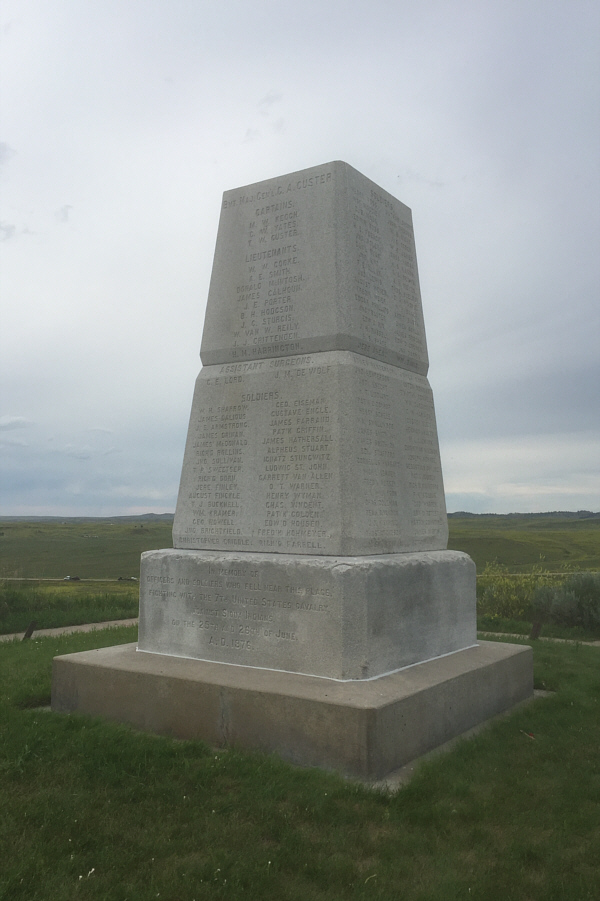 |
This granite memorial stands over the mass grave atop Last Stand Hill. |
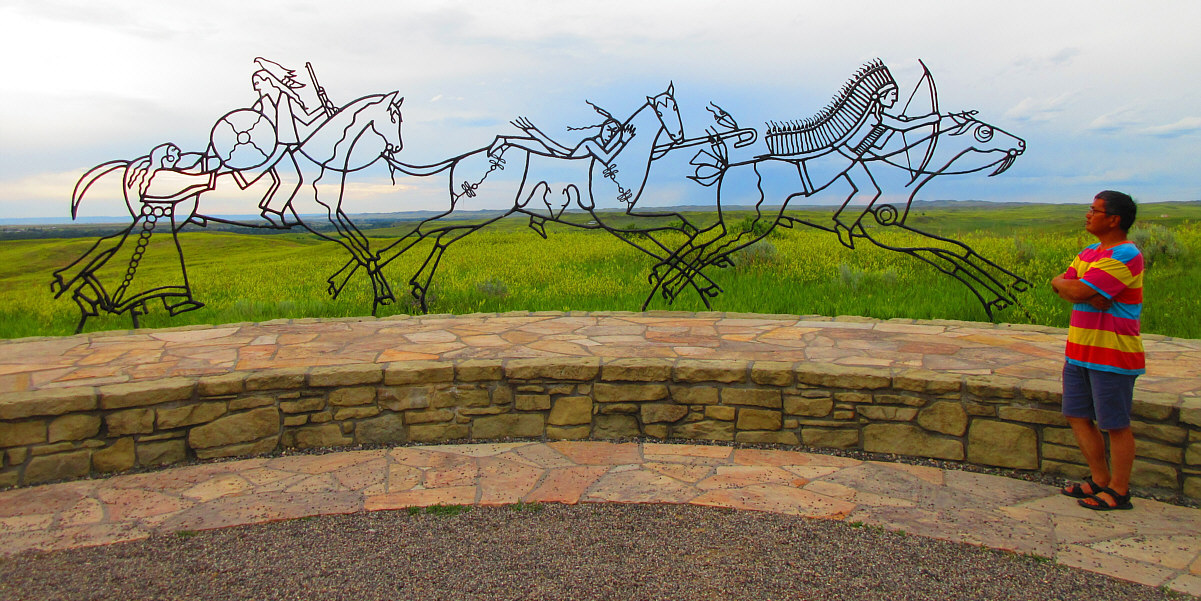
Near Last Stand Hill is the Indian Memorial which honours the Native American warriors involved in the battle. This sculpture was created by native artist, Colleen Cutschall.
Photo courtesy of Zosia Zgolak
 |
Nearly 5000 people--mainly military personnel and their relatives--are buried at Custer National Cemetery which is located near the monument's visitor centre. |
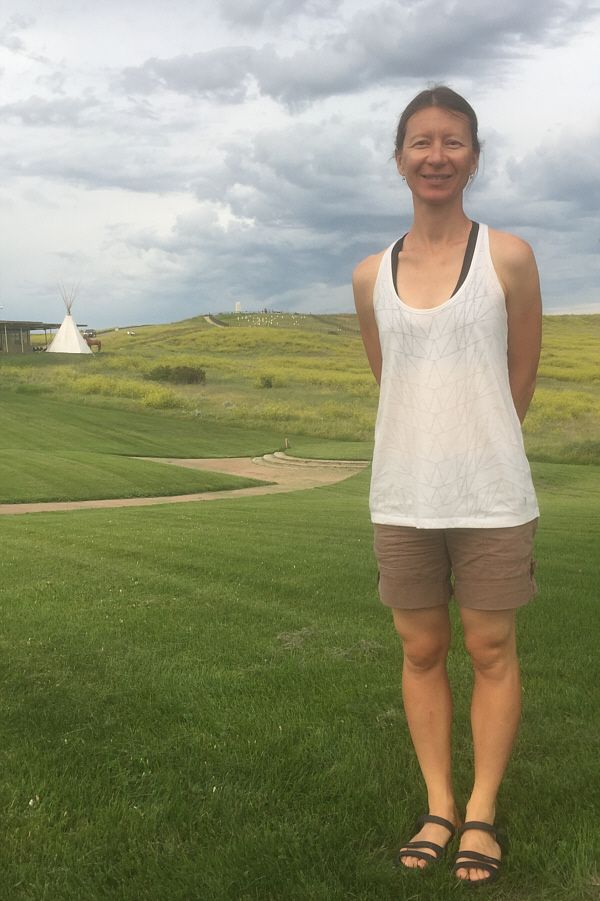 |
Zosia stands at the edge of Custer National Cemetery with Last Stand Hill in the background. The teepee is part of the visitor centre. |